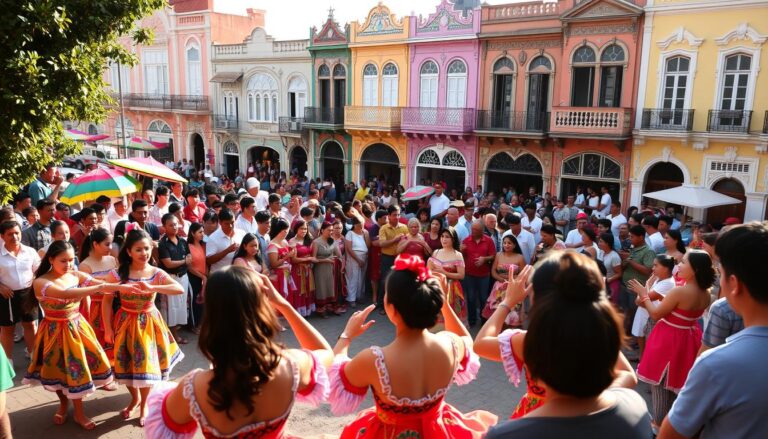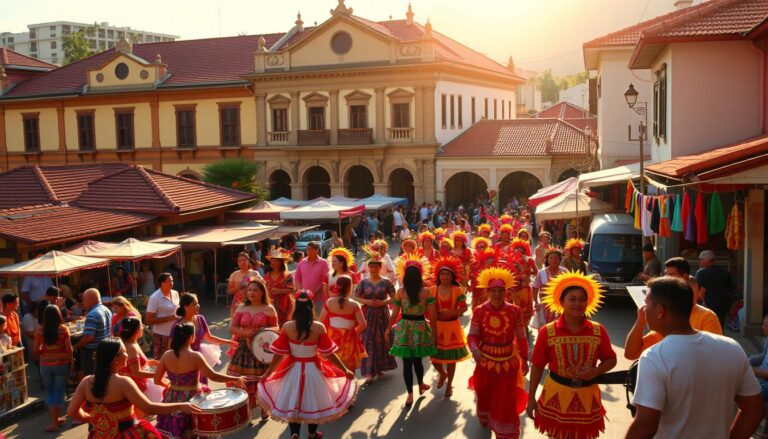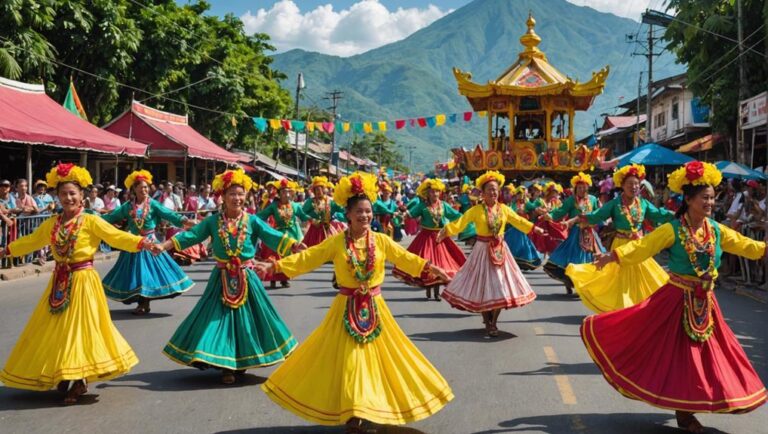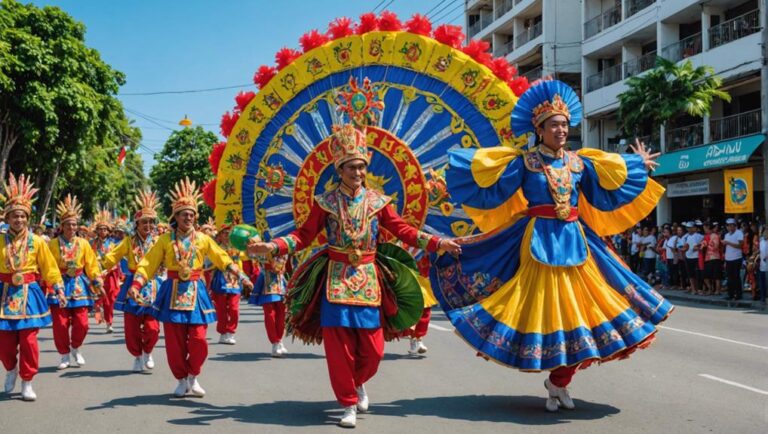Dinamulag Festival: Zambales Dinamulag Festival: History & Celebrations
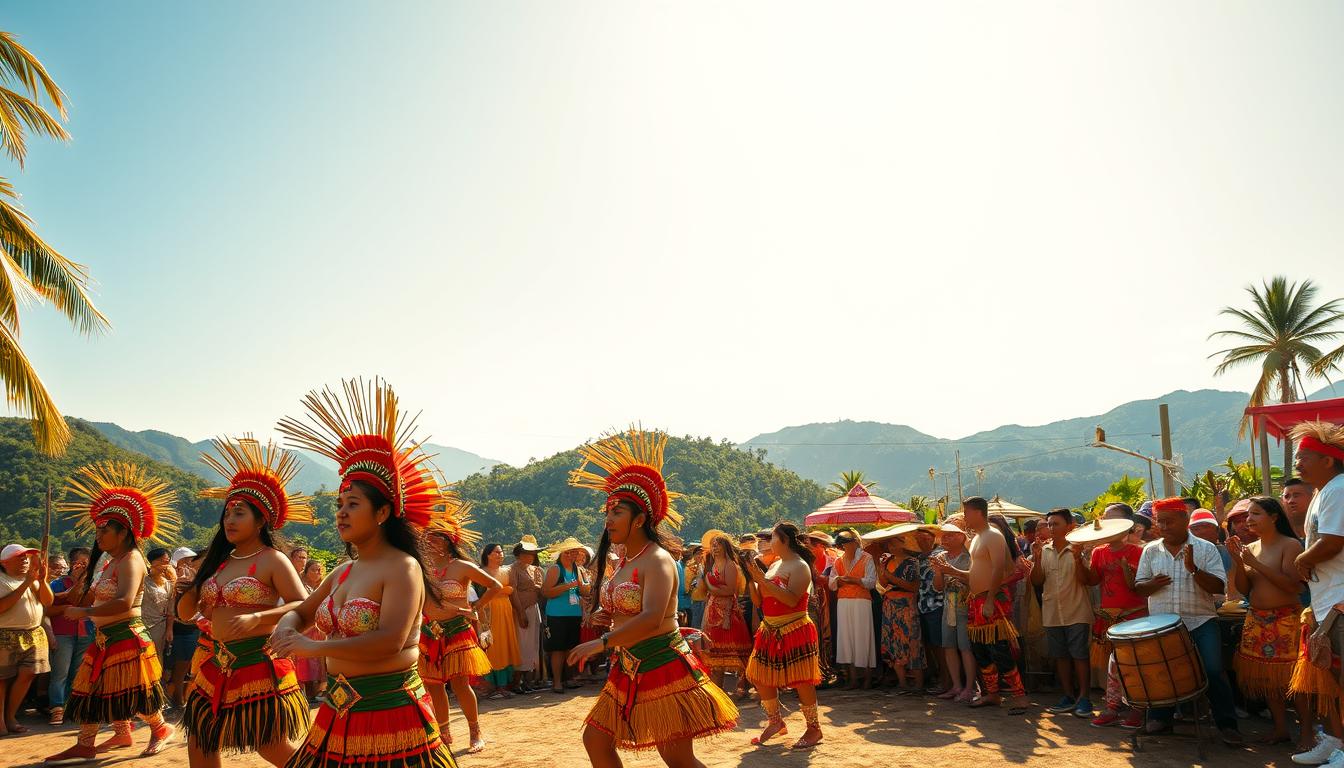
Every spring, the province of Zambales transforms into a vibrant hub celebrating its world-famous fruit. The annual event honors the region’s golden treasure: the carabao mango, recognized by Guinness World Records in 1995 as the sweetest variety globally. This celebration blends agricultural pride with cultural heritage, drawing visitors from across the Philippines.
First held in 1999, the gathering began as a way to thank farmers for their harvest and showcase local innovations. Its name comes from the Sambali term for “carabao,” reflecting the mango’s distinct shape. Over the years, it has grown into a multi-day spectacle featuring parades, dance competitions, and creative displays of mango-inspired art.
The event also highlights Zambales’ role as a top mango producer. In 2013, the Department of Agriculture confirmed its exceptional sweetness, further cementing its status. Today, the celebration boosts tourism while supporting farmers through trade fairs and agricultural exhibits.
Key Takeaways
- The festival originated in 1999 to honor Zambales’ record-breaking mango harvests.
- Its name derives from the local word for “carabao,” referencing the mango’s unique shape.
- Guinness World Records certified Zambales mangoes as the world’s sweetest in 1995.
- Cultural dances, parades, and mango-themed art dominate the 9-day celebration.
- Local businesses thrive through tourism and mango product displays during the event.
- The provincial government partners with farmers to promote sustainable agriculture.
History and Significance of the Dinamulag Festival
In the late 1990s, farmers in San Felipe began gathering to honor their prized carabao mango harvests. What started as small-town gratitude evolved into a cultural phenomenon recognized across the province. Early articles in The Philippine Star described it as “a farmer’s ode to nature’s gold,” capturing its grassroots spirit.
Origins and Evolution of the Celebration
The event’s name comes from the Sambali word for “carabao,” inspired by the mango’s curved shape. By 2005, it expanded to include all 13 municipalities of Zambales. Traditional activities like indigenous games merged with modern crowd-pullers like float parades, creating a unique blend of old and new.
Cultural and Economic Impact in Zambales
Local businesses report a 40% sales surge during the week-long event, according to provincial trade data. Street vendors sell mango-based treats, while artisans display crafts made from dried fruit skins. The celebration also revived nearly forgotten folk dances, performed in vibrant costumes resembling the fruit’s golden hues.
Schools and community groups now use the occasion to teach younger generations about agricultural heritage. This fusion of commerce and culture has turned a simple harvest thanksgiving into a cornerstone of regional identity.
Celebration Highlights and Traditional Events
Vibrant rhythms and golden hues fill the air as Zambales bursts into its signature event. Crowds gather along the main streets of Iba, where creativity meets tradition in a nine-day spectacle. From dawn until dusk, the province transforms into a stage for both ancestral heritage and modern artistry.
Rhythmic Revelry on the Pavement
The street dancing competition remains the crown jewel of celebrations. Teams like the Masinloc Street Dancers wow judges with synchronized moves inspired by farming rituals. Their costumes – adorned with faux mango motifs – shimmer under the April sun. In 2023, Iba City’s contingent clinched victory with a fiery routine blending tribal beats and contemporary choreography.
Spotlight on Local Ambassadors
Binibining Zambales elevates the display of regional pride. Contestants from San Felipe to Subic showcase not just beauty but also advocacy for agricultural preservation. The 2022 winner, Maria Santos, used her platform to promote eco-friendly farming techniques. Her coronation night speech highlighted the “sacred bond between land and people.”
Creative Clashes and Time-Honored Games
Artisans mold intricate mango-shaped sculptures during Likhang Buhangin, while children rediscover larong lahi like patintero. Families cheer during the float parade, where tractors become moving art installations draped in fruit garlands. These activities create a tapestry linking generations through shared joy and cultural memory.
Dinamulag Festival and the Mango: Agricultural Roots and Global Appeal
Nestled between mountain ranges and coastal plains, Zambales’ fertile soil has nurtured mango groves for centuries. This province produces the legendary Sweet Elena variety, whose 22% sugar content earned a Guinness World Records title in 1995. Farmers here have turned this golden fruit into both a cultural icon and economic powerhouse.

The Heritage of Zambales Mangoes
Local growers perfected cultivation techniques over generations, leveraging volcanic ash-rich earth. The carabao mango thrives here, developing its signature curved shape and honey-like sweetness. These fruits became so vital to community life that they inspired the dinamulag mango festival, blending gratitude for the harvest with artistic expression.
In 2013, the Department of Agriculture confirmed Zambales’ dominance by declaring its mangoes the sweetest nationally. This recognition boosted exports, with 30% of crops now shipped to Japan and South Korea.
Local Innovation and International Recognition
Entrepreneurs transformed surplus produce into value-added goods like spiced dried slices and mango-infused vinegar. Agri-tourism activities let visitors pick fruit straight from orchards, while trade fairs showcase over 50 mango-based products annually.
- Solar-powered drying facilities extend shelf life
- Zero-waste processing uses skins for artisan paper
- Farm cooperatives partner with chefs for recipe contests
As dusk falls on the final night, a fireworks display illuminates the sky – a metaphor for how tradition and innovation coexist in this thriving agricultural community.
Conclusion
Each year, the streets of Zambales come alive with rhythms and colors that honor its agricultural legacy. The town transforms into a stage where street dancers in mango-inspired costumes blend ancestral farming rituals with modern dance moves. Crowds cheer for elaborately decorated float parades, while Binibining Zambales contestants advocate for sustainable farming – a testament to the event’s role in community engagement.
At its core, the celebration spotlights the Zambales mango, a Guinness-recognized variety that put the province on the global map. Local businesses thrive during the nine-day events, selling everything from dried fruit snacks to artisan crafts. The fireworks display that lights up the final night symbolizes how tradition and innovation coexist here.
This unique fusion of culture and agriculture draws visitors worldwide, boosting regional tourism by 25% annually. For those seeking authentic Filipino heritage, Zambales offers more than just sweet fruit – it’s a living showcase of pride, creativity, and unity. Plan your visit during April to taste, dance, and witness this golden celebration firsthand.

